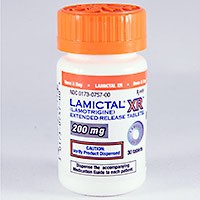 Childers, Schlueter & Smith, LLC has recently filed suit for cases in which patients developed Stevens-Johnson Syndrome (SJS) from taking one or more of the following medications:
Childers, Schlueter & Smith, LLC has recently filed suit for cases in which patients developed Stevens-Johnson Syndrome (SJS) from taking one or more of the following medications:
- Acetaminophen (Tylenol, Alka-Seltzer Cold & Sinus)
- Allopurinol (Zyloprim)
- Lamictal (lamotrigine)
- Hair Dye (7th Stage Clairol Professional, Divina 10 Volume Creme Developer)
In many cases, patients diagnosed with SJS have injuries caused or worsened by the negligence of physicians who are not properly trained or make medical errors in the treatment of this condition.
Standard of Care Regarding a SJS Diagnosis
Recent literature indicates that the standard of care for physicians requires that, after a diagnosis of SJS or symptoms indicating a strong suspicion for SJS, the physician is required to immediately remove the offending agent and transfer the patient, as soon as reasonably possible, to a burn unit, intensive care unit or other unit specializing in the treatment of SJS and Toxic Epidermal Necrolysis. A patient who is not transferred to a burn unit or not provided specialty treatment soon after his diagnosis with SJS may have a claim for medical malpractice.
Examples of medical malpractice related to a delay in diagnosis or the misdiagnosis of SJS include:
- Failure to diagnose SJS completely, or misdiagnosing it as a comparatively minor condition
- Discharge from a hospital despite the presence of an SJS diagnosis (or symptoms that should have led to a diagnosis)
- Failure or delay in ordering a dermatology consultation (not having a dermatologist on staff is not a defense)
- Failure to order wound care
- Failure to stop prescribing the medication that caused the SJS to the patient
- Administering ointments or medications that are known to cause or worsen SJS
What is SJS?
SJS is a rare, serious disorder of the skin and mucous membranes that usually results from a reaction to a medication or chemical. It often begins with flu-like symptoms and progresses to a painful red or purplish rash that spreads and blisters. Eventually, the top layer of the affected skin dies and sheds, exposing the body to serious secondary infection. Any delay in treatment can lead to unnecessary pain, suffering, and in some cases, death.







